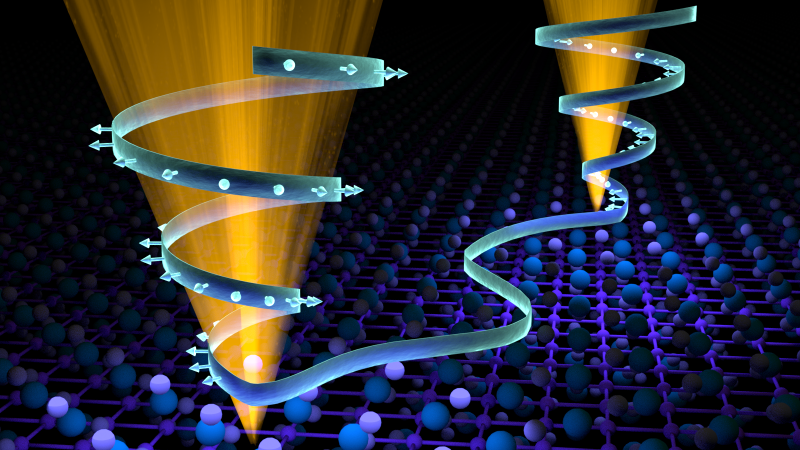February 19, 2018

The observation of an abnormal state of matter in a two-dimensional magnetic material is the latest development in the race to harness novel electronic properties for more robust and efficient next-generation devices.
Neutron scattering at the Department of Energy’s Oak Ridge National Laboratory helped a multi-institutional team led by Tulane University investigate a graphene-like strontium-manganese-antimony material (Sr1-yMn1-zSb2) that hosts what researchers suspect is a Weyl semimetal phase.
The properties of Weyl semimetals include both magnetism and topological semimetal behavior, in which electrons—or charge carriers—are nearly massless and immune to conduction defects. The team’s results are published in the journal Nature Materials.
The neutron scattering measurements at the High Flux Isotope Reactor, a DOE Office of Science User Facility at ORNL, and magnetic field studies at Florida State University’s National High Magnetic Field Laboratory uncovered key mechanistic behaviors underpinning the quantum material’s relationship between electron transport and magnetism.
“Weyl semimetals are kind of the Holy Grail in physics right now,” said Alan Tennant, chief scientist at ORNL’s Neutron Sciences Directorate. “Some of these types of materials are showing quantum behavior at room temperature, which is precisely what has to be achieved to provide a path toward quantum electronics.”
Significantly stronger than steel, and an excellent conductor of heat and electricity, graphene is a highly desirable building material for electronics. However, it lacks traditional magnetic properties necessary to achieve greater control over electron transport. That’s why researchers are searching for Weyl semimetals, says Qiang Zhang, a visiting scientist from Louisiana State University working in ORNL’s Shull Wollan Center—a Joint Institute for Neutron Sciences.
Read more at ornl.gov/news.
Related Publication: Liu, J.Y., et.al. (2017). A Magnetic Topological Semimetal Sr1−yMn1−zSb2 (y, z < 0.1). Nature Materials 16, 905-910. doi: 10.1038/nmat4953